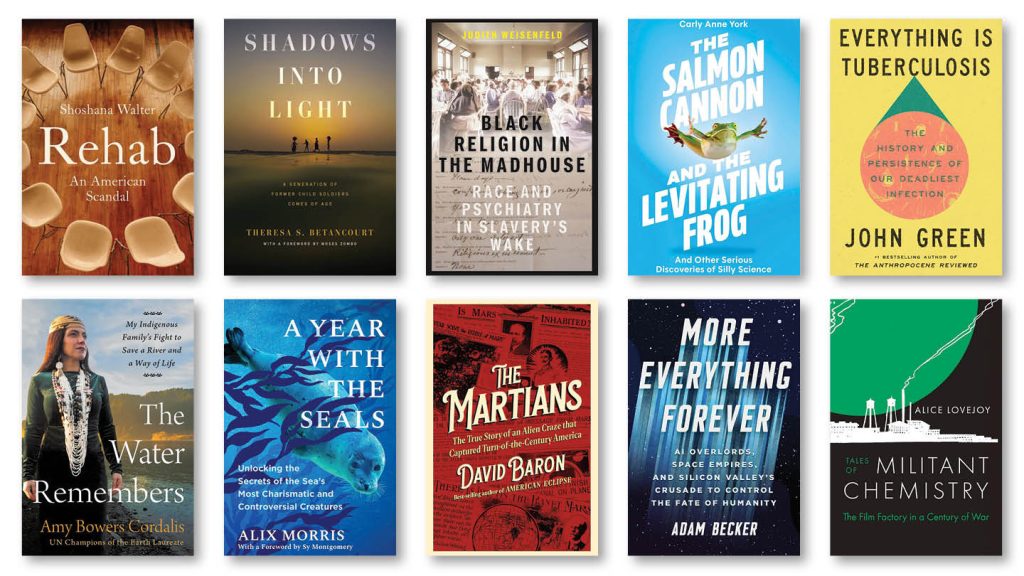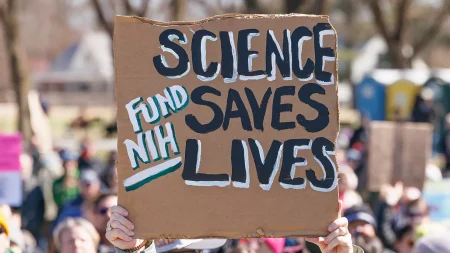Science Books of the Year: Illuminating Society’s Most Pressing Issues
In a year filled with scientific literature that challenged our understanding of the world, the Science News staff has selected books that delve into the intersection of science and society’s most urgent concerns. From addiction treatment to artificial intelligence, these works offer thoughtful analysis and compelling narratives that bring complex issues to life through a human lens.
At the core of many selections is the human cost of scientific advancement and policy. Shoshana Walter’s “Rehab” stands out as a powerful exposé of America’s addiction treatment industry, where profit sometimes takes precedence over patient care. Through intimate portraits of people struggling with addiction, Walter reveals how unethical practices and limited access to quality care have created a system that often fails those most in need. Her investigative work puts faces to the statistics, showing how scientific approaches to addiction treatment collide with commercial interests, leaving vulnerable individuals caught in the middle.
Similarly haunting is Theresa S. Betancourt’s “Shadows Into Light,” which follows the lives of children forced to fight in Sierra Leone’s brutal civil war. This longitudinal study, spanning decades, examines how childhood trauma shapes development and what factors contribute to resilience. Betancourt’s research offers profound insights into the neurological and psychological impacts of trauma, while honoring the humanity of former child soldiers as they forge new lives. The book demonstrates how rigorous scientific inquiry can illuminate paths to healing for those who have experienced extreme violence. In “Black Religion in the Madhouse,” Judith Weisenfeld exposes another dark intersection of science and society by examining how white psychiatrists pathologized Black religious practices after the Civil War, revealing how racism has shaped psychiatric history in America.
The value of scientific curiosity without immediate practical applications finds a champion in Carly Anne York’s “The Salmon Cannon and the Levitating Frog.” York makes a passionate case for basic science research, arguing that investigations driven by simple curiosity about how the world works often lead to unexpected breakthroughs with far-reaching benefits. This defense of “science for science’s sake” serves as a counterpoint to increasingly pragmatic research funding models. Meanwhile, John Green’s “Everything is Tuberculosis” examines how one of humanity’s oldest diseases persists despite available treatments, illuminating how social inequality maintains TB’s deadly grip on vulnerable populations worldwide. Green masterfully blends medical history with contemporary social analysis to show how science alone cannot solve health crises rooted in poverty and injustice.
Environmental science and conservation form another prominent theme in this year’s selections. Amy Bowers Cordalis’s “The Water Remembers” recounts the Indigenous-led effort to remove dams from the Klamath River, resulting in the world’s largest dam removal project to date. As a Yurok tribal attorney, Cordalis provides a unique insider perspective on how traditional ecological knowledge combined with scientific evidence to restore river ecosystems. Alix Morris’s “A Year With the Seals” explores the complex consequences of conservation success as rebounding seal populations create tension in coastal communities, demonstrating that scientific solutions often create new social challenges. These works show how environmental science is inseparable from questions of justice, cultural heritage, and community values.
The final thread running through this year’s selections concerns our technological future and scientific history. David Baron’s “The Martians” revisits the late 19th-century fascination with supposed canals on Mars, revealing how scientific theories—even mistaken ones—can capture public imagination and influence scientific development. Adam Becker’s “More Everything Forever” offers a critical examination of tech billionaires’ visions of AI-assisted space colonization, arguing that these seductive sci-fi futures are both implausible and ethically problematic. And Alice Lovejoy’s “Tales of Militant Chemistry” uncovers how Kodak’s chemical expertise supported U.S. weapons manufacturing, including atomic bomb development, during both world wars. Together, these works remind us that scientific advancement always occurs within historical and ethical contexts that shape both what questions we ask and how we use the answers. As we face unprecedented technological capabilities and environmental challenges, these books collectively argue for a more thoughtful integration of scientific knowledge with human values.















